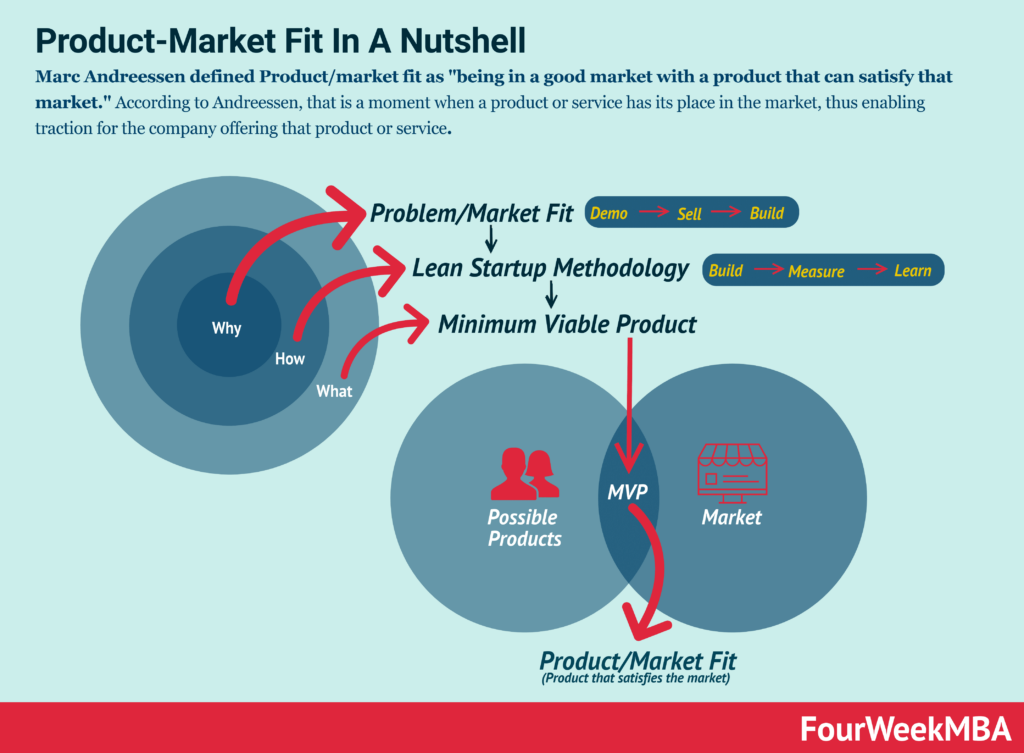What is Product Market Fit?
Product-market fit is a concept that describes the point at which a product satisfies a strong market demand. It’s the stage at which a product’s capabilities align well with customer needs, and the product starts to sell itself because of organic demand in the marketplace.
Detailed Explanation
In the SaaS world, Product Market Fit is when a company’s product meets real market demand. It’s the golden moment when a product fills a need or solves a problem so well that customers are naturally drawn to it. It indicates that they have identified a sustainable target market and are serving that market with a product that meets its needs better than other alternatives. An example would be a video conferencing software gaining popularity as remote work becomes more prevalent.

For SaaS (Software as a Service) companies, achieving product-market fit is a critical milestone that can determine the success or failure of the product. Here’s a breakdown of the key elements involved:
- Understand the Target Customer: Identify who your customer is and understand their needs and pain points. This might involve creating customer personas and conducting market research.
- Solve a Problem: Your SaaS product should address the pain points identified. It could be an innovative solution or an improvement over existing solutions. But most importantly, it should provide tangible value to your customers.
- Validate the Solution: Once your product is built, you need to validate that it indeed solves the problem you identified. This could be done through alpha or beta testing with a small group of users. Collect feedback and make necessary adjustments to your product.
- Achieve Willingness to Pay: Beyond just using your product, customers should be willing to pay for it. This is an essential part of product-market fit. You need to demonstrate that your product provides enough value that users are willing to pay for it.
- Measure Satisfaction: Use tools like surveys or Net Promoter Score (NPS) to gauge customer satisfaction. High satisfaction levels usually indicate good product-market fit.
- Monitor Churn and Retention Rates: In the SaaS model, retaining customers is just as important as acquiring new ones. A low churn rate and high retention rate can indicate a good product-market fit.
- Scale Up: Once product-market fit is achieved, you can start to scale up marketing and sales efforts. A product that fits the market will likely see a good response to these efforts.
Remember, product-market fit is not a one-time process. As market needs, competition, and technology evolve, SaaS companies need to continuously iterate on their products and ensure they maintain a good fit with their target market.
Why It Matters
For SaaS CEOs and CMOs, achieving Product Market Fit is crucial. It’s the tipping point where your product is no longer just an idea but a solution that customers are willing to pay for. This can lead to rapid growth and long-term success.
Potential Misunderstandings
One misconception is that Product Market Fit is a one-time event. In reality, it’s a continual process of adaptation as markets and customer needs evolve.
Enhancing Product Market Fit with User Experience Tactics
Achieving Product Market Fit is a pivotal milestone for SaaS businesses, indicating that the product resonates with the target market’s needs. However, maintaining and enhancing this fit requires continuous efforts to improve user experience and drive adoption. Dive into our guide on “Product Management: +9 Tactics to Enhance User Experience & Drive SaaS Adoption” to explore strategies that can bolster your product’s alignment with market demands. From understanding user behavior to implementing feedback loops, these tactics ensure that your product remains attuned to evolving customer needs, solidifying its market fit.
Frequently Asked Questions
- What are the signs of Product Market Fit?
A key sign of Product Market Fit is when you’re unable to meet demand for your product. This can be seen in rapid user growth, high user engagement, or positive customer feedback. - How can I achieve Product Market Fit?
Achieving Product Market Fit often involves iterations of product development based on customer feedback and market research.
